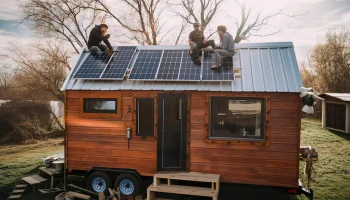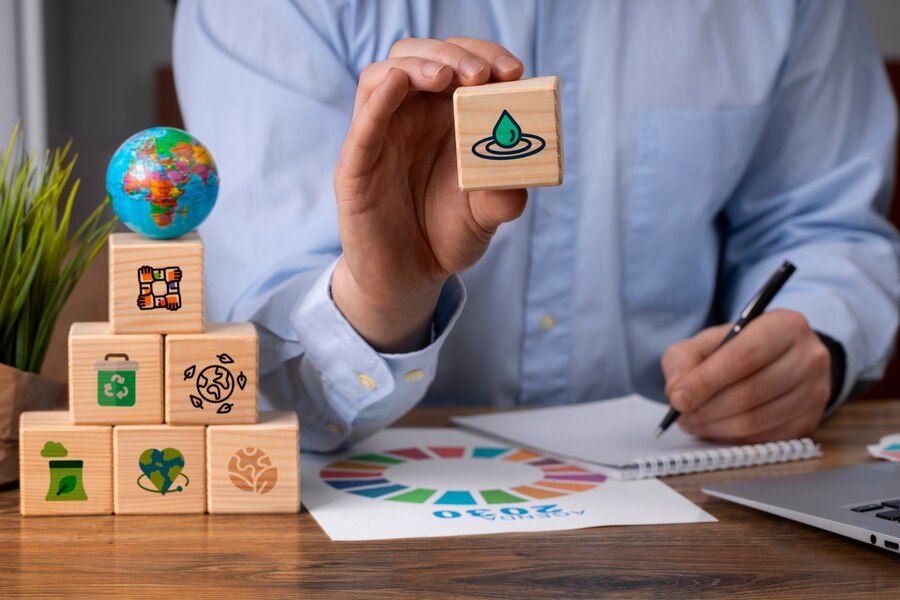The world is waking up to the urgency of climate change. Industries across the globe are reevaluating their environmental impact.
The casting industry is within the manufacturing sector. It has a significant opportunity to contribute to a greener future. Casting processes shape materials by pouring them into a mold. They can use many resources and produce a lot of waste.
We are looking toward a more sustainable path for casting. Several solutions have surfaced. They showcase the industry’s dedication to minimizing its impact on the planet.
Here are ten casting solutions that companies are adopting. Read on.
1. Use of Recycled Materials
Casting companies can impact by using recycled materials in their processes. By doing so, they reduce the demand for virgin materials. They also divert waste from landfills.
This sustainable practice involves incorporating recycled metal alloys, such as aluminum. This helps preserve natural resources. It also maintains or improves the quality of cast products.
Using recycled and recyclable materials reduces the environmental impacts of mining and refining. It often leads to energy savings during the melting and casting processes.
2. Energy-Efficient Manufacturing
 Technological advancements in casting have led to more energy-efficient practices. Companies can achieve this by implementing improvements to casting equipment. They cut energy loss and maximize efficiency.
Technological advancements in casting have led to more energy-efficient practices. Companies can achieve this by implementing improvements to casting equipment. They cut energy loss and maximize efficiency.
Also, preheating materials can reduce the energy needed to heat them for casting. This further contributes to energy savings. Moreover, process automation plays a vital role in minimizing energy-intensive manual labor.
By investing in energy efficiency, casting companies can reduce their carbon footprint. They can also realize significant cost savings in the long run.
3. Waste Minimization
Sustainable casting operations aim to cut waste at its source. This is in line with the principle of “the best waste is the one that’s never created.”. They can achieve this through various techniques and strategies.
They can optimize mold designs to reduce material trimmings. This ensures a more efficient use of resources.
Additionally, they use robotics in pouring and casting. This can ensure precision and accuracy, minimizing overage. They also reduce the need for intricate product finishing, which can generate waste.
They can enhance sustainability by embracing waste minimization practices. This will contribute to a cleaner and greener environment.
4. Water Conservation
Casting is a hight water-intensive process. It requires significant amounts of water for cooling and cleaning molds.
Manufacturers are now putting in place innovative measures to reduce water usage. One such approach involves adopting closed-loop systems that recycle and reuse water. This ensures that water usage is efficient throughout the casting process.
Advancements in technology have led to the development of high-temperature graphite molds. This eliminates the need for water-based mold cooling systems. It also further enhances water conservation efforts.
5. Green Sand Casting
Green sand casting presents a sustainable alternative to traditional methods.
Green sand casting reduces the reliance on synthetic resins and harmful chemicals. It achieves this by using natural and reusable clay-based bonding agents instead. Traditional casting sands contain these chemicals.
This helps to cut environmental pollution. It also ensures a safer working environment for foundry workers.
Furthermore, the recyclability of green sand allows for the reduction of waste materials. This would otherwise end up in landfills. It contributes to a more sustainable and responsible casting industry.
6. Investment Casting
Investment casting, also known as lost-wax casting, is a precision technique. It allows for the creation of intricate and complex parts with a high surface quality.
Investment casting uses a wax pattern coated with a ceramic shell. This ensures a precise reproduction of fine details. This results in a finished product that requires minimal or no secondary machining. It reduces both time and material waste.
Moreover, the reduced need for machining also saves energy. This invests casting a sustainable choice.
Additionally, the investment casting process is precise. It minimizes material use, contributing to resource conservation and efficiency.
7. Additive Manufacturing

Additive manufacturing, also known as 3D printing, epitomizes sustainable casting practices. They build metal parts layer by layer using additive techniques.
This innovative approach reduces the need for traditional casting methods. Moreover, printing complex and optimized parts eliminates the need for extra steps. This reduces material usage and energy consumption.
This process increases efficiency. It also promotes a sustainable and friendly to the environment production process.
8. Life Cycle Assessment
Conducting life cycle assessments is a crucial practice for a sustainable strategy. Manufacturers can test the impacts of a product from its creation to its disposal.
This helps them gain valuable insights to make informed decisions. They can make better choices about materials, production processes, and end-of-life considerations.
This holistic approach enables them to cut environmental footprints and optimize resource use. It also contributes to long-term environmental benefits for a greener future.
9. Lean Manufacturing Principles
Adopting lean manufacturing principles is crucial to become sustainable in the long run. They can focus on reducing various forms of waste, such as:
- overproduction
- excessive waiting times
- unnecessary transport
- excessive inventory
This way, the industry can make significant strides in reducing its resource consumption. This paves the way for a more sustainable future for the entire sector.
10. Collaboration And Knowledge Sharing
In isolation, we cannot achieve sustainable manufacturing practices. The casting industry benefits from collaboration. It works with other industries, research institutions, and governing bodies. This helps because of its intricate processes and material demands.
Companies should engage in knowledge sharing and resource pooling. This way, the industry can tackle the multifaceted challenges related to sustainable manufacturing.
This collaboration helps solidify the industry’s role in promoting a greener global economy. It ensures that future generations enjoy more environment-conscious and responsible production methods.
Start Implementing These Casting Solutions Today For A Greener Tomorrow
The casting industry faces significant environmental challenges. These innovative solutions show that a green transformation is necessary. They also show that it is within reach.
Ten casting solutions for a greener tomorrow are being embraced. As a result, the industry could reduce its environmental impact. It could also improve resource efficiency and lead the charge in sustainable manufacturing.
The future of casting is in our hands, and the time to act is now.
Ready to explore more ideas and solutions in other industries? Browse our blog for more enlightening content.
Read Also:




























